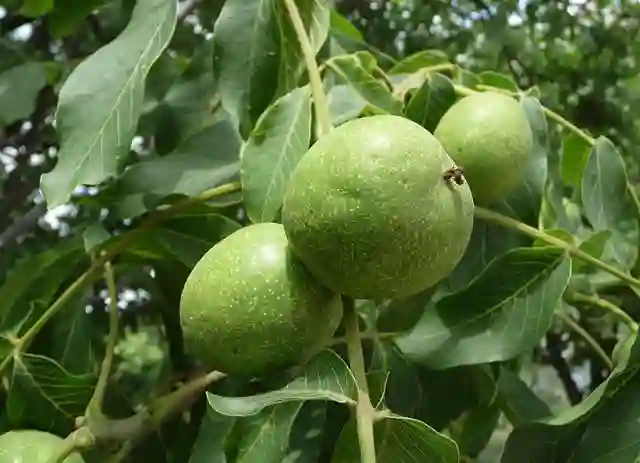
FAQs About Cuphea Ignea: Everything You Need to Know
As a plant enthusiast, I’ve often been asked about Cuphea Ignea, commonly known as the Cigar Plant. It’s a fascinating plant with unique qualities that make it stand out in any garden. If you’re considering adding Cuphea Ignea to your collection or just curious about its care and characteristics, you’re in the right place. Here’s a comprehensive guide to answer your most pressing questions.
253 Species in Genus Cuphea
What is Cuphea Ignea?
Cuphea Ignea, or the Cigar Plant, is a perennial shrub renowned for its vibrant, tubular flowers that resemble small cigars. Native to Mexico, this plant is cherished for its bright orange and red blooms, which attract butterflies and hummingbirds. It’s a hardy plant that adds a splash of color to gardens and landscapes.
How to Grow Cuphea Ignea?
Growing Cuphea Ignea is relatively straightforward if you follow a few key steps. Start by choosing a sunny location in your garden, as this plant thrives in full sunlight. The soil should be well-drained, so consider adding compost to improve soil quality. Cuphea Ignea is tolerant of various soil types but prefers slightly acidic to neutral pH levels.
When planting, space the plants about 12 to 18 inches apart to allow for their spreading habit. Water them regularly but avoid waterlogging. Once established, Cuphea Ignea is relatively low-maintenance and can tolerate short periods of drought.
How to Collect Cuphea Ignea Coan Seeds?
If you want to propagate Cuphea Ignea from seeds, collecting them is a crucial step. Wait until the flowers have fully bloomed and start to wither. The seed pods will begin to dry out and turn brown. Gently remove the pods and place them in a paper bag to dry completely. Once dry, you can shake the bag to release the seeds.
Store the seeds in a cool, dry place until you’re ready to plant them. They can be sown directly in the garden or started indoors for a head start on the growing season.
How to Harvest Cuphea Ignea Coan Seeds?
Harvesting Cuphea Ignea Coan seeds is similar to collecting seeds from other varieties. Allow the seed pods to mature on the plant until they are dry and brown. Carefully cut the pods from the plant and place them in a container to further dry. Once thoroughly dried, you can extract the seeds by gently crushing the pods.
Make sure to label and store the seeds in an airtight container to maintain their viability for future planting.
Is Cuphea Ignea Cigar Plant Drought Tolerant?
Cuphea Ignea is moderately drought-tolerant once established. While it can handle short periods of dry conditions, it thrives with regular watering. During extended droughts, it’s essential to water the plant to ensure it remains healthy and continues to bloom. Mulching around the base can help retain soil moisture and reduce the frequency of watering.
What Butterflies Like Cuphea Ignea?
Cuphea Ignea is a magnet for butterflies, particularly those attracted to bright, tubular flowers. Monarchs, Swallowtails, and Painted Ladies are among the species that visit Cuphea Ignea for nectar. By planting this shrub, you can create a butterfly-friendly garden that enhances biodiversity and adds a lively touch to your outdoor space.
How to Care for Cuphea Ignea
Caring for Cuphea Ignea involves a few essential practices. Regular deadheading—removing spent blooms—encourages more flowers and helps maintain the plant’s appearance. Additionally, pruning the plant in early spring can promote healthy growth and shape. Fertilize with a balanced, all-purpose fertilizer during the growing season to support vigorous blooming.
How to Propagate Cuphea Ignea
Propagation of Cuphea Ignea can be done through seeds or cuttings. For seeds, follow the collection and planting steps mentioned earlier. Alternatively, you can take semi-hardwood cuttings in late summer. Dip the cuttings in rooting hormone, plant them in a well-draining potting mix, and keep them in a warm, humid environment until roots develop.
What to Plant with Cuphea Ignea
Cuphea Ignea pairs well with other sun-loving plants that complement its vibrant colors. Consider planting it alongside lantanas, salvias, or zinnias for a dynamic, colorful garden display. Its growth habit also makes it suitable for mixed borders and container gardening.
Can You Grow Cuphea Ignea Indoors?
Growing Cuphea Ignea indoors is possible but challenging. It requires a bright, sunny spot with plenty of light. You’ll need to provide a consistent temperature and humidity level. While it can adapt to indoor conditions, it’s generally more successful outdoors where it can fully thrive in natural sunlight.
Is Cuphea Ignea Toxic?
Cuphea Ignea is non-toxic to pets and humans. It’s safe to include in gardens where children and animals may come into contact with it. However, as with any plant, it’s a good idea to avoid ingesting parts of the plant.
Common Problems with Cuphea Ignea
Common issues with Cuphea Ignea include pests such as aphids and spider mites, which can cause leaf damage. Ensuring proper air circulation and avoiding overhead watering can help prevent these problems. If you notice any signs of disease, such as leaf spots or mildew, treat the plant with appropriate fungicides or insecticides.
Comparing Cuphea Ignea with Similar Plants
Cuphea Ignea is often compared to Cuphea llavea, another member of the Cuphea genus. While both share similar flowering characteristics, Cuphea llavea tends to have slightly smaller flowers and a more compact growth habit. Cuphea ignea’s larger, tubular blooms and more upright growth make it a standout choice for many gardeners.
Cuphea Ignea is a fantastic addition to any garden, providing vibrant color and attracting wildlife. With the right care and maintenance, it can thrive and offer beauty throughout the growing season. Whether you’re collecting seeds or enjoying its blooms, Cuphea Ignea is a plant worth exploring.
If i die, water my plants!



